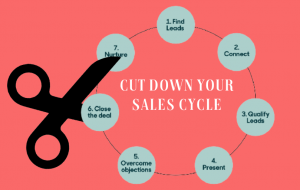In certain market segments, it is very common to find companies that have a sales team based on sales representatives.
Even in most cases, the company already has this model established from the beginning, and all its revenue comes from this model.
In this context, one of the biggest uncertainties is: should I put pre-sale and change a model that already works?
If this is your question, rest assured: you are in the right place!
In this post, we will address some of the main challenges of the commercial representation model and how having this format connected to pre-sales will facilitate the control of opportunities and bring more efficiency to the sector.
You will read about:
- What are the pros and cons of the model with trade representatives;
- What controls pre-sales provides to this format;
- How to connect pre-sales to the business representation model;
- What gains does the combination of models bring to companies?
Learn how Pre-sales helps you manage operations with sales representatives
Sales with sales representatives is one of the most widespread models worldwide. However, despite its popularity, it brings some pros and cons.
Low Cost vs. Insecurity
One of the main pros is the low cost. This is because, most of the time, the representative is remunerated by commission – and all the operational cost of the sale is on his own.
On the other hand, as one of the biggest cons, we can point out the financial insecurity that this business model brings with respect to the company’s cash.
This is justified by the company, in most cases, not being aware of primary factors that generate predictability, such as:
- prospecting volume;
- dedicated time in activities relevant to the sale;
In addition to, of course, the risk of turnover – a common problem in this segment: the representative goes out to work on a competitor and takes with him his client portfolio.
How do I connect the pre-sales model to the business representation model?
In general, the best way to make this connection is by establishing a prototype. It is not necessary – and not even recommended – to change the whole process at once.
The best way is to choose some representatives with the most open profile and who are looking for portfolio growth to connect them with the Pre-sale cell.
In this way, the representative continues with his mode of operation, but starts to have a new source of opportunities that were prospected and qualified in a deep way by the Pre-sale.
This increases the volume of opportunities in your pipeline and consequently generates an increase in the number and quality of sales.
What controls does Pre-sales bring to the operation that has a sales representative?
From the moment you have the Pre-sales cell connected to the representatives, the company has much more control over its business process. This is because she is the originator of the opportunities. With this, it can measure several points, such as:
- Volume of new prospects;
- Number of connections made;
- Number of activities performed;
- Volume of opportunities per funnel step;
- Step-by-step conversion rates.
The management of these indicators makes the company have full control and predictability over the entry of new customers.
In addition, they mark the beginning of a direct connection of the company with the end customer. This ensures stability in this business relationship, preventing, in a possible breach between the representative and the company, the customer portfolio is taken to a direct competitor.
Another very important factor is the monitoring of the performance of commercial representatives: the opportunities that arrive in their hands go through the same quality sieve.
Therefore, if there is disparity in conversion into sales, the company – in the person of the manager – can act by directing the opportunities for those who bring the most result – or even taking more severe measures, such as the exchange of the representative.
Commercial representation + Pre-sale: what are the gains for companies?
There are several gains that the combination of the models brings to the company. However, in my view, the main ones are two:
- Control of the customer base;
- Increased commercial performance.
1. Customer base control
Controlling the customer base is essential to the sustainability of the company. A healthy company needs to know exactly why your customer buys or quits.
This is crucial not to be taken by surprise by the market, and to be swallowed up by an unknown factor.
The fact that it depends solely on the relationship between client and sales representative makes the company totally hostage to the representative.
He, in turn, may not bring all the information from this relationship. In general, the representative only brings the request made.
However, the information of why the request happened – which are very useful for backfeeding commercial and marketing strategies – is in his hands.
Therefore, it is essential for the company to know deeply the needs of its client and also of the market as a whole. Only then will you be able to make decisions based on concrete data.
2. Increased commercial performance
About the increase in commercial performance, usually the greatest effort is in the initial part of the funnel, precisely in the prospecting and qualification of leads.
There is even a maxim that says,“As long as the seller prospects, he doesn’t sell. And while he sells, he doesn’t prospect.”
In my view, this is the mathematical origin of pre-sales.
Having an expert in each part of the process makes each step developed with excellence. In this context, the pre-sales figure is essential to leverage the volume of capture and qualification of opportunities.
This is because, in addition to focusing on this step for longer, it allows the delegate to devote himself to the final goal that is CLOSING.




